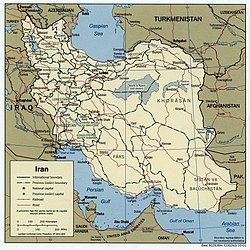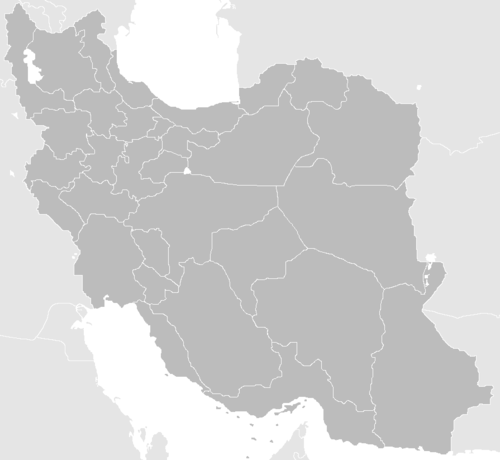

The following outline is provided as an overview of and topical guide to Iran:
Contents
- General reference
- Geography of Iran
- Environment of Iran
- Regions of Iran
- Demography of Iran
- Government and politics of Iran
- Branches of the government of Iran
- Foreign relations of Iran
- Law and order in Iran
- Military of Iran
- Local government in Iran
- History of Iran
- History of Iran, by period
- History of Iran, by subject
- Culture of Iran
- Art in Iran
- Sports in Iran
- Economy and infrastructure of Iran
- Education in Iran
- See also
- References
- External links
Iran – sovereign country located in Southwest Asia and the Middle East. [1] Iran is bound by the Gulf of Oman and the Persian Gulf to the south and the Caspian Sea to its north. Shi'a Islam is the official religion, and Persian is the official language. [2] Iran's population is about 83,500,000; [3] and is the 18th largest country in the world in terms of area at 1,648,195 square kilometres (636,372 sq mi). Iran is home to one of the world's oldest continuous major civilizations, with historical and urban settlements dating back to 4000 BC. [4] [5] [6] Throughout history, Iran has been of geostrategic importance because of its central location in Eurasia and is a regional power. [7] [8] The political system of Iran, based on the 1979 Constitution, comprises several intricately connected governing bodies. The highest state authority is the Supreme Leader, currently Ayatollah Ali Khamenei.





